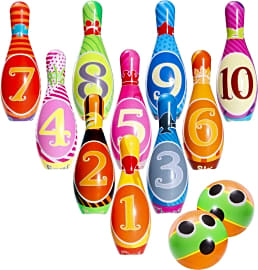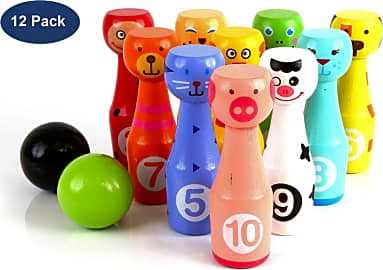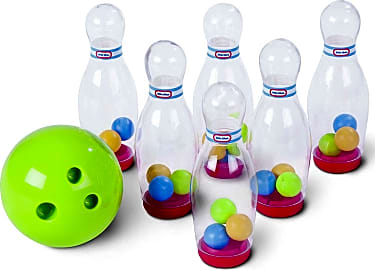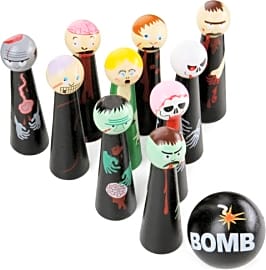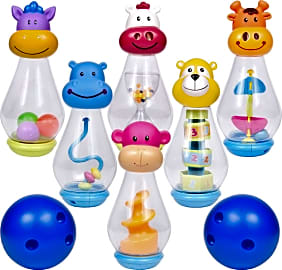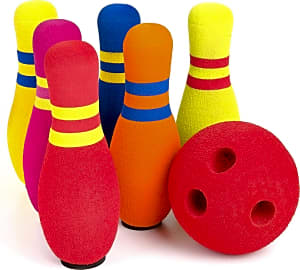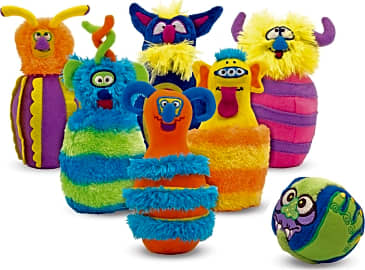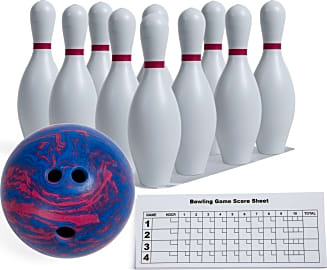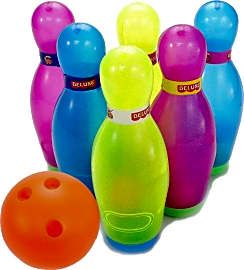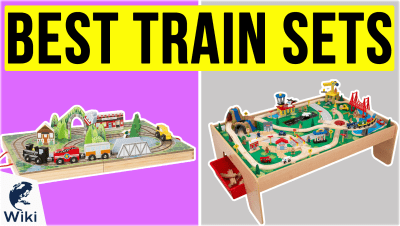The 10 Best Kids Bowling Sets

This wiki has been updated 43 times since it was first published in October of 2015. Prepare your children for a lifetime of drinking cheap beer and eating poor quality fried food with one of these kids' bowling sets. Just kidding, of course. Our selections will not only give your little ones hours of fun, but they can also be a great tool for developing hand-eye coordination and fine motor skills, and some of them can even help teach tots about numbers and colors. When users buy our independently chosen editorial recommendations, we may earn commissions to help fund the Wiki.
Editor's Notes
April 03, 2019:
A bowling set is a great way for kids to learn hand-eye coordination and motor skills, and some of them are specifically designed to help teach them to identify numbers, colors, and animals, including the Fun Little Toys, Neato Tek Friends, and iBaseToy Sport. If you're worried about your little ones hurting themselves, there are plenty of sets made of softer materials, like the Melissa & Doug's Play Set, Kidoozie Six Pin, and iBaseToy Sport, which are made from foam, and the Melissa & Doug Monster Plush, which is covered in huggable fuzzy fabric. Wooden sets, like the Neato Tek Friends and Front Porch Classics' Zombies, are far more durable than their plastic counterparts, and the latter is a miniature set that's easy to take on the go.
Benefits of a Kids Bowling Set
Second, using a bowling set to teach your child the game can foster a sense of sportsmanship.
Gone are the days when you have to venture to the bowling alley with your little ones in tow. Now, you can get a bowling experience as a family in the comfort of your living room (minus the cheap beer and greasy fried foods). In addition to being able to avoid the noisy crowds and questionable smells, your little tyke will reap a number of benefits from using one of these bowling sets.
First, simply learning to roll the ball toward the pins can improve hand-eye coordination and overall motor skills. Many kids bowling sets come equipped with a ball with holes or indentations that allow for easy gripping.
Second, using a bowling set to teach your child the game can foster a sense of sportsmanship. He will learn patience and how to take turns with siblings or other children. It can improve his social skills and ability to interact with his peers.
Third, bowling is a fun way to exercise. Even though a bowling set in the living room isn’t quite like playing at the lanes, it can still get your little one moving. It is especially fun on those rainy or snowy days when outdoor play is not an option.
A bowling set can be used as an educational tool. Because kids bowling sets come in fun colors, you can use them to teach your child how to recognize colors and create patterns. You can also teach subtraction with each throw by pointing out how many pins fell and how many are left standing.
Finally, a bowling set grows with your child. It's great for the toddler just beginning to walk to the grade schooler learning basic math and socialization. It is something that the whole family can enjoy together.
How To Teach Bowling With A Kids Bowling Set
When choosing the right bowling set for your child, there really isn't a wrong answer. You can choose anything from basic to themed sets and can even choose sets that create a more realistic experience.
Once your little one gets the hang of bowling at home, he will be ready for the lanes.
A bowling set is a great way for your child to learn the basics before heading to the lanes. If you want to get creative, you can set up markers on the floor using tape that mimics a real lane. You can create arrows and a foul line, just like the real thing. This way, you can teach your child how to aim for the markers and improve his coordination.
Once you have the setup complete, take the opportunity to teach your child the rules of the game. Depending on his age, you don’t have to focus on teaching how the game is scored, but you can talk about bowling etiquette, strategy, and terminology.
Then you can move on to teaching bowling technique. If he is old enough to grasp the concepts, teach him how to focus on his target and how to step forward and follow through with his throw.
It’s a good idea to teach your child to stretch before playing. While bowling is a leisurely activity, it's still exercising. Once your little one gets the hang of bowling at home, he will be ready for the lanes.
A Brief History of the Kids Bowling Set
Bowling is one of the oldest games in existence originating around 3200 BCE. Artifacts indicate people in ancient Egypt and Rome played some version of the game using balls made from grain husks covered in leather and string. Some balls have been found that were made of porcelain. The leather balls seem to have been thrown at the targets while the porcelain balls were rolled along the ground.
Years later, around 400 CE, the Germans took up bowling as a part of their religious rituals. It was played primarily as an outdoor sport. In Southampton, England the oldest bowling green in the world was built in 1299. It is now known as the Southampton Bowling Club Old Bowling Green.
In 1520, Martin Luther built his own bowling lane for his children and set the standard number of pins at nine.
King Edward III banned bowling in 1366 because he decided that it distracted noblemen from practicing archery. England finally converted lawn bowling into a game for all types of weather in 1455 when they built roofs over the lanes. In 1520, Martin Luther built his own bowling lane for his children and set the standard number of pins at nine.
An English king struck again when Henry VIII passed a law that prevented the lower classes from bowling. His law involved a levy on private lanes that allowed only the wealthy to play. The Declaration of Sports was published by King James I in 1617 that banned bowling on Sundays.
The first indoor bowling alley, named Knickerbocker Alleys, was opened in New York City on New Year’s Day in 1840. Nine-pin bowling was the standard until 1841 when Connecticut banned it in an attempt to stop gambling. Creative Americans then established ten-pin bowling to get away with it on a technicality. The game quickly evolved, and New York City became a center for the game.
The American Bowling Congress created the modern-day rules for ten-pin bowling in 1895. Around that time, Duckpin bowling was invented in Boston and became quite popular in Baltimore, Maryland by the end of the nineteenth century.
The game has evolved over the years with numerous leagues and associations springing up across the United States and the rest of the world. While traditional ten-pin bowling is the most commonly played version of the game, there are still several variations that are still played today.
The creation of kids bowling sets has only served to spread the popularity and love of the game to future generations. While it was once illegal in England for the common man to bowl, now anyone can enjoy a version in the comfort of home.


